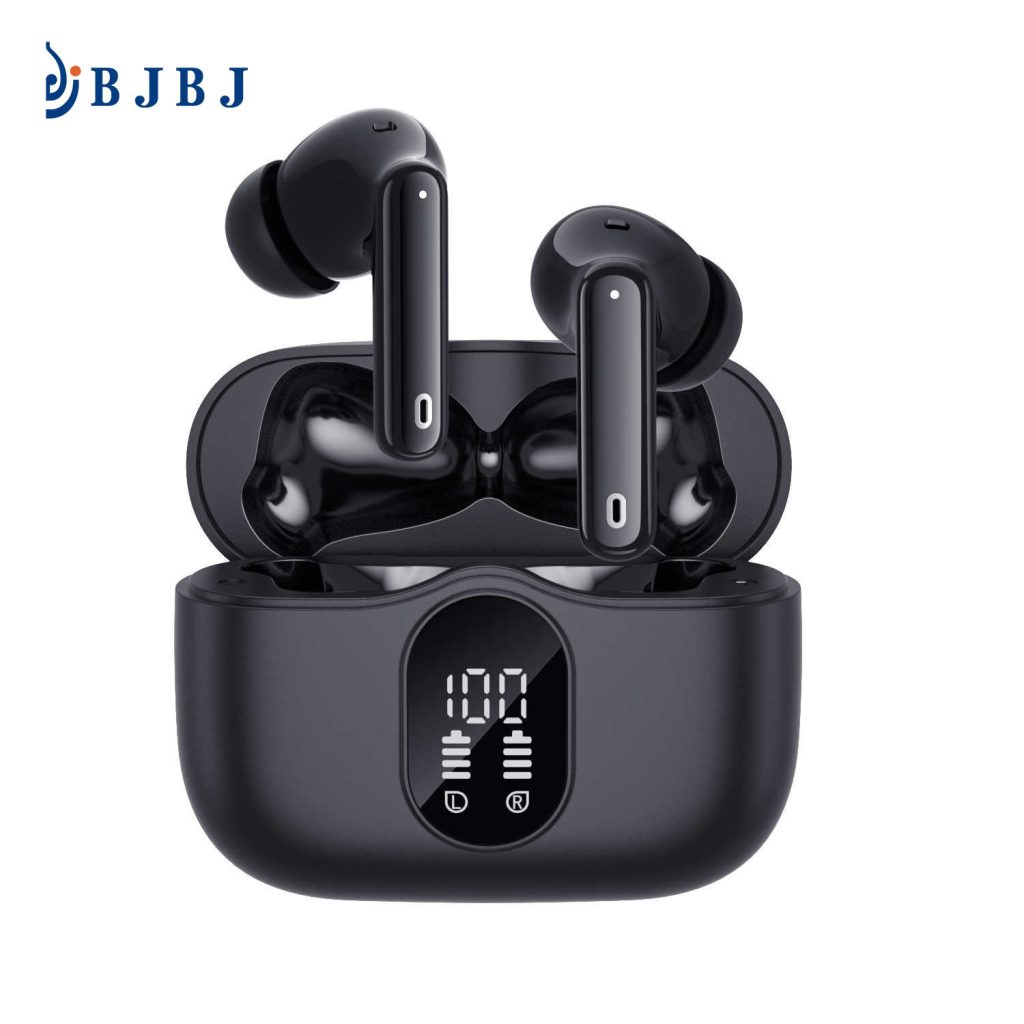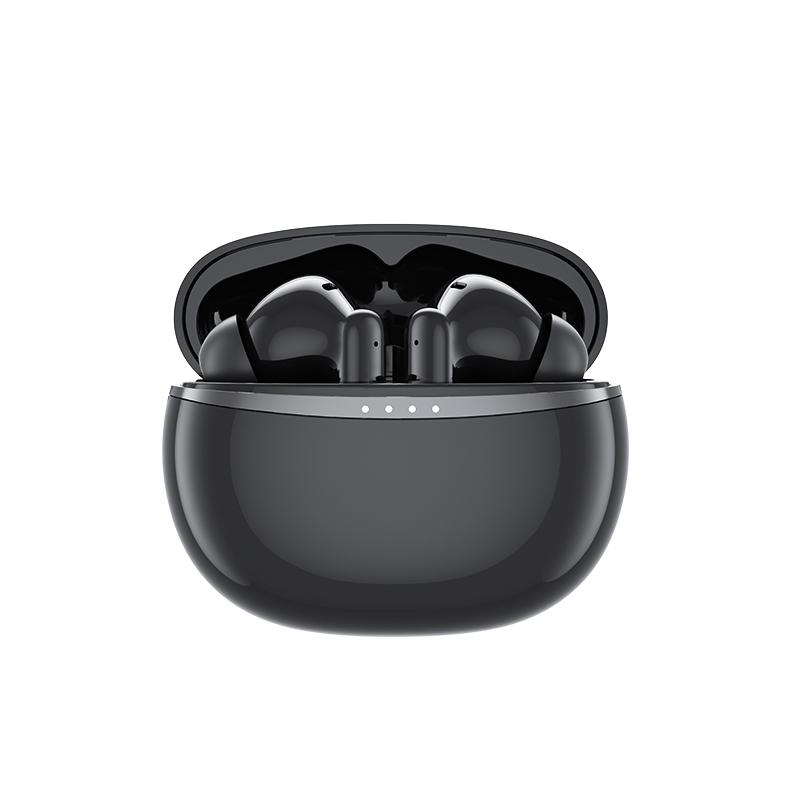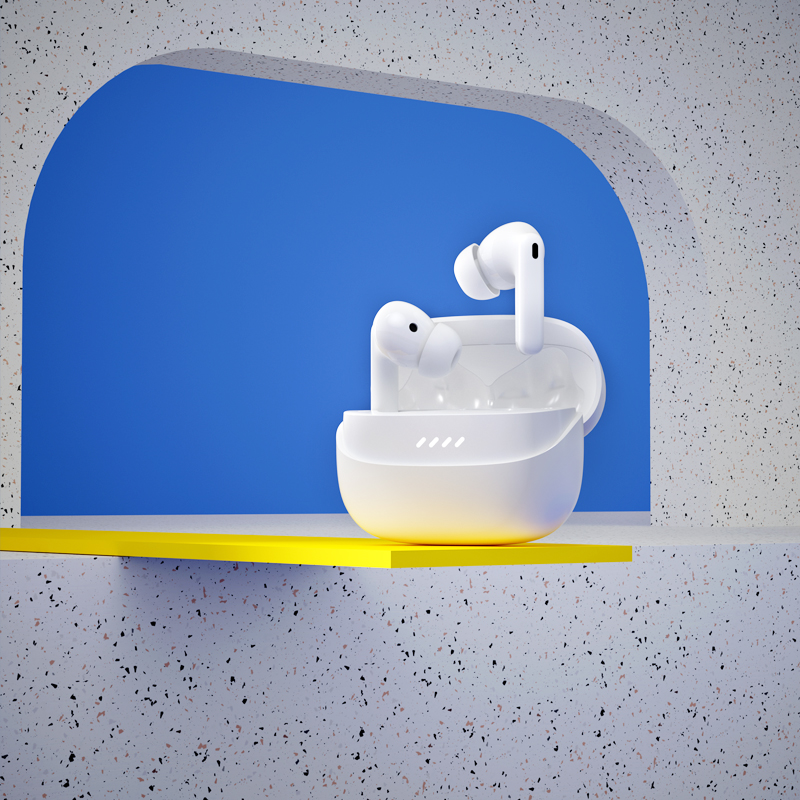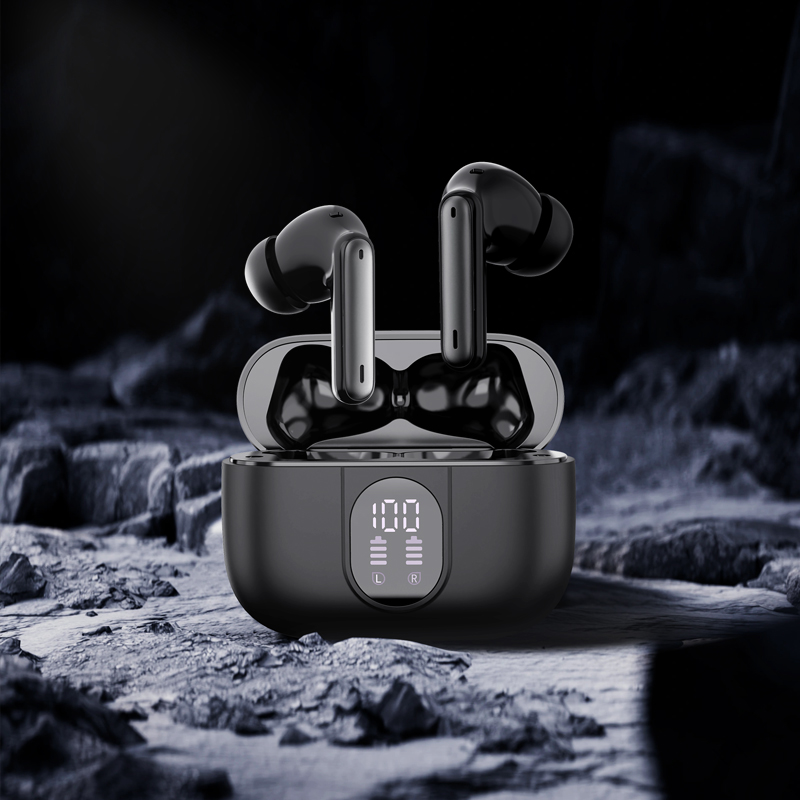The ability to reduce noise is crucial for TWS Earbuds. One is to lessen noise and refrain from raising the volume excessively in order to prevent ear injury. Second, reduce background noise to enhance call and sound quality. Active and passive noise reduction are the two categories of noise reduction.
Based on physical principles, passive noise reduction uses TWS Earbuds to stretch and envelop the entire ear. They require expensive materials, have limited air permeability, and are difficult to dry out after perspiring. In order to seal the ear canal and reduce noise, in TWS Earbuds are “inserted” into the ear canal. Lengthy-term wearing is painful, there is unequal pressure within and outside the ear canal, and the wearing period shouldn’t be too long because this will impair hearing.

By examining the chip in the TWS Earbuds, active noise reduction is accomplished. The order of the noise reduction is:
- The earphone’s signal microphone first picks up any audible low-frequency noise (100 Hz to 1000 Hz) in the surrounding area (up to 3000hz at present).
- The control circuit then receives the noise signal and operates in real-time.
- To cancel out the noise, the hi-fi horn releases sound waves that have the same amplitude as the noise but the opposite phase.
- As a result, the noise stops and cannot be heard.

Let’s look at what ANC, ENC, CVC, and DSP mean in English since these terms are used to describe active noise reduction.
- The active noise control (ANC) system’s basic operation is to gather ambient noise from outside, convert it to an inverted sound wave, and add it to the horn end. Ambient noise combined with inverted ambient noise is the final sound experienced by human ears. The benefit is himself, and the two types of noise are layered to lessen the sensory cacophony. Depending on where the pickup microphone is located, active noise reduction can be separated into feedforward active noise reduction and feedback active noise reduction.
- Enc: (environmental noise cancellation) can successfully block out 90% of the reversing environmental noise, lowering it to less than 35dB so that gamers may converse more easily. Determine the speaker’s exact direction of speech using the dual microphone array, and then filter out all external noise interference while safeguarding the main direction of the target voice.
- The call software’s noise-reduction mechanism is called CVC (clear voice capture). mostly for the call’s echo that was created. It provides the call’s echo cancellation and background noise reduction features with the full duplex microphone denoising software. It is currently the most cutting-edge noise reduction technology available for Bluetooth TWS Earbuds.
- Digital signal processing, or DSP, focuses mostly on high- and low-frequency noise. In order to obtain a better noise reduction impact, the system copies a reverse sound wave that is equal to the external environment noise after the microphone gathers the noise from the environment. DSP noise reduction works on a similar principle as ANC noise reduction. However, within the system, the forward and reverse noise of the DSP noise reduction are directly countered and neutralized.




